
The Douglas A-4 Skyhawk is a single-engine subsonic single-seat attack fighter, aircraft carrier-capable. It was used by the United States Navy (USN) and the United States Marine Corps (USMC) in the early 1950s.
Other users were by nearly every country in the Free World at that time period. This delta-winged aircraft was designed and produced by the Douglas Aircraft Company, later McDonnell Douglas Aircraft Company. The A-4D which was the original USN pre-1962 designation as a lightweight fighter aircraft which had maximum take-off weight (MTOW) of 24,500 pounds.
The aircraft had 5 hardpoints (hardpoints are holding points to hold bombs, missiles, and even nuclear devices). It had the capability of carrying as much ordnance as the World War II B-17 Flying Fortress although a much smaller aircraft. The first A-4s were powered by a Wright J65 turbojet but the “E” models and beyond used the Pratt & Whitney J52 turbojet.
They were produced from 1954 to 1979 and 2,960 Skyhawks were built.

Design and Development
The United States Navy (USN) put out a request for the United States aviation companies to develop a jet-powered aircraft to replace the Douglas AD Skyraider (A-1 Skyraider)
Ed Heinemann, chief engineer of Douglas Aircraft decided on a design that would minimize the size, weight, and complexity of the aircraft. The result was an aircraft about half the weight of the aircraft had the USN had proposed and less the $ 1 million cost per copy of the proposal.
Its wing was so compact that it didn’t need a wing tip folding for storage on aircraft carriers. On account of its size such nicknames as “Scooter”, “Kiddicar”, “Bantam Bomber”, “Tinker Toy Bomber” and because of its speed, “Heinemann’s Hot Rod”.
It set a world speed record of 695 mph on 15 October 1955. The aircraft was typical of post -World War II design with a lower mounted delta wing, tricycle landing gear and a single turbojet engine in the rear of the fuselage with two intakes on the side of the aircraft.
The horizontal stabilizer is mounted above the fuselage at the rear of the aircraft. It had two 20mm Colt Mk-12 cannons one on each wing. As mentioned earlier, it had 5 hardpoints for missiles and bombs. The jet engine could be accessed for engine change by removing the aft section of the fuselage and then removing the engine.
In the A-4 Skyhawk designed the concept of operation, the “buddy” refueling system “. In this concept, one A-4 was designed as the “tanker” which meant no ordinance was loaded on the aircraft while on the ship. Only a large center fuel tank was placed on the Skyhawk.
The “tanker” A-4 would take off first and the other A-4s could be loaded with a minimal fuel load and with ordnance right up to maximum takeoff weight (MTOW) and then refueled with the “tanker”. The -4s would then be on their way to its target with a full load of fuel and ordnance. This concept is used by the F/A-18 Super Hornet today.
The first prototype flew on 22 June 1954 and operational deliveries commenced in 1956 to USN and United States Marine Corp (USMC)
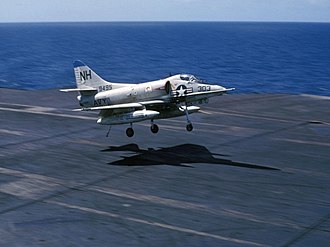
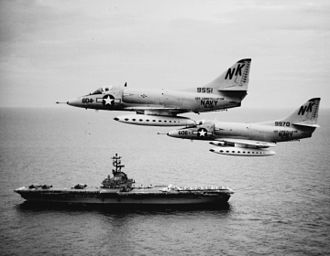
Operational History
The USN Operated the A-4 Skyhawk as a training and adversary aircraft well into the 1990s while removing them from front line attack squadrons as early as 1967. The USMC refused the A-7 Corsair as a replacement for the A-4, but kept the Skyhawk and in fact ordering the new A-4M model. These A-4s were finally retired in 1994.
Vietnam War
The A-4 Skyhawk was USN primary light attack aircraft during the Vietnam War. The A-4 made the first air strikes of the war and a USMC A-4 was said to drop the last bomb of the conflict.
During the War, USN notables Lt. Commander Everett Alvarez, Lt. Commander John McCain, and Commander John Stockdale. The only victory over an enemy Mig that was by Lt. Commander Theodore Swartz from the USS Bon Homme Richard.
The first A-4, piloted by Lt. Commander Everett Alvarez, to be shot down by anti-aircraft artillery (AAA) was on 08 August 1964. Alveraz became the first POW of the Vietnam War. He was released on 12 February 1973. He was a prisoner at the “Hanoi Hilton” for 8 1/2 years. John McCain also was shot down in an A-4 and was a POW at the same “Hanoi Hilton”
Personal Account of an A-4 Incident
It was in the mid-80s, I was on Wake Island as a DOD contract worker. Our company ran the whole island from Power Plant to the Flight Line. I worked in Base Operations during that time.
The USMC was operating a Transpac (ferrying a squadron of fighters in, this case, A-4 Skyhawks across the Pacific) to a base in the Mainland USA. The Transpac consisted of 12-19 Skyhawks (exact number unknown) and two USAF KC-10 Aerial Refueling Tankers.
They left Iwakuni, Japan, and the tankers out of Yokota AB Japan. They joined together over Tokyo Bay for the first refueling. Several A-4s were “topped off” and the tanker was starting to fuel another A-4, when turbulence caused the probe on the Skyhawk to hit the drogue basket (trailing the KC-10, used for refueling) which broke the fuel line to the drogue basket which caused the A-4 to ingest raw JP-5 fuel which stated an engine fire on the Skyhawk.
The pilot ejected from the A-4 and parachuted into Tokyo Bay. He was rescued by a Japanese fish boat.
Meanwhile, I was working Base Operations that morning and I got an alert on our AFTN (Aviation Teletype Network) circuit that the first cell of 6 A-4s and 1 KC-10 were returning to base (RTB) then I got another alert that the second cell was also RTB.
This was highly unusual. Occasionally a single fighter and wingman might divert either back to base or another airport if they are experiencing a maintenance problem depending on where they are along the path to their destination. But for all of the Transpac to return to their bases was highly unusual.
Of course, I didn’t know anything about the fire and ejection of the pilot from the A-4. When I found out what had happened I figured the pilot would be in the hospital for a while. But the next day the entire Transpac left Japan and landed on Wake without further incident.
I asked the Transpac Coordinator (usually LCOL USMC Officer) how the pilot who had to bail out was doing. He said “he is in the back of that truck by the Wake Terminal, ask him” It shows on tough and rugged a USMC Pilot can be. True Story.
Skyhawks were well loved by their crews for being tough and agile. Plus the low costs and operating costs, as well as easy maintenance, made the A-4 popular at all levels of the military.
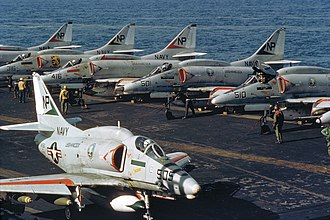
Where you can see the A-4 Skyhawk
There are about 43 A-4 Skyhawks that are airworthy at various airports and museums throughout the United States.
The following are on Static Displays in the United States:
137813 National Naval Aviation Museum NAS Pensacola, Florida.
139929 U.S.S. Hornet Museum Almeida, California
139947 MAPS Air Museum Canton, Ohio
142180 NAS Wildwood Museum Cape May County Airport New Jersey
142226 Carolinas Aviation Museum Charlotte Douglas International Airport Charlotte, North Carlina
142230 Naval Surface Warfare Center Crane, Indiana
142105 Veterans of Foreign Wars Post 8076 Hartwell, Georgia
142928 Pima Air And Space Museum in Tucson, Arizona
This is Just a Partial List of the A-4 Skyhawk on Display. Check With Your Local Air Museum for More Information.
Tech Specs for the A-4 Skyhawk
Wingspan: 26 ft 6 in
Length: 40 ft 3 in
Height: 15 ft 0 in
Weight: 10,450 lbs (empty) 24,500 MTOW
Max Speed: 585 mph
Ceiling: 42,2500 ft
Range: 1,700 NMI (ferry)
Engine: 1/Pratt & Whitney J-52-P8A Turbojet
Crew: 1
THANKS, FOR READING! I HOPE THIS WAS INFORMATIVE!
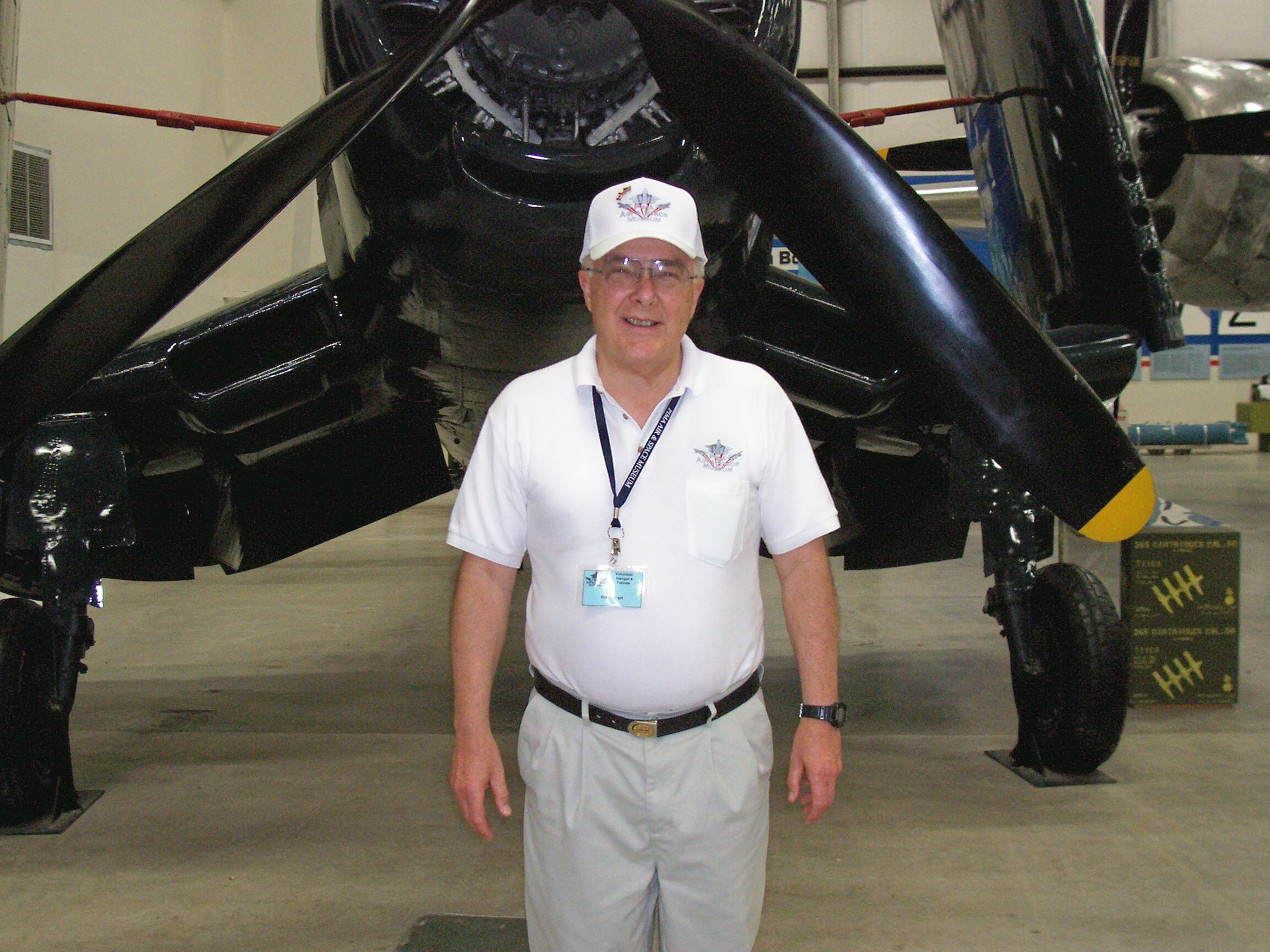
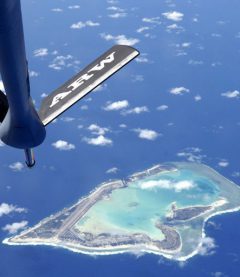
Keep up the good work, interesting to see A/C from my era of service.